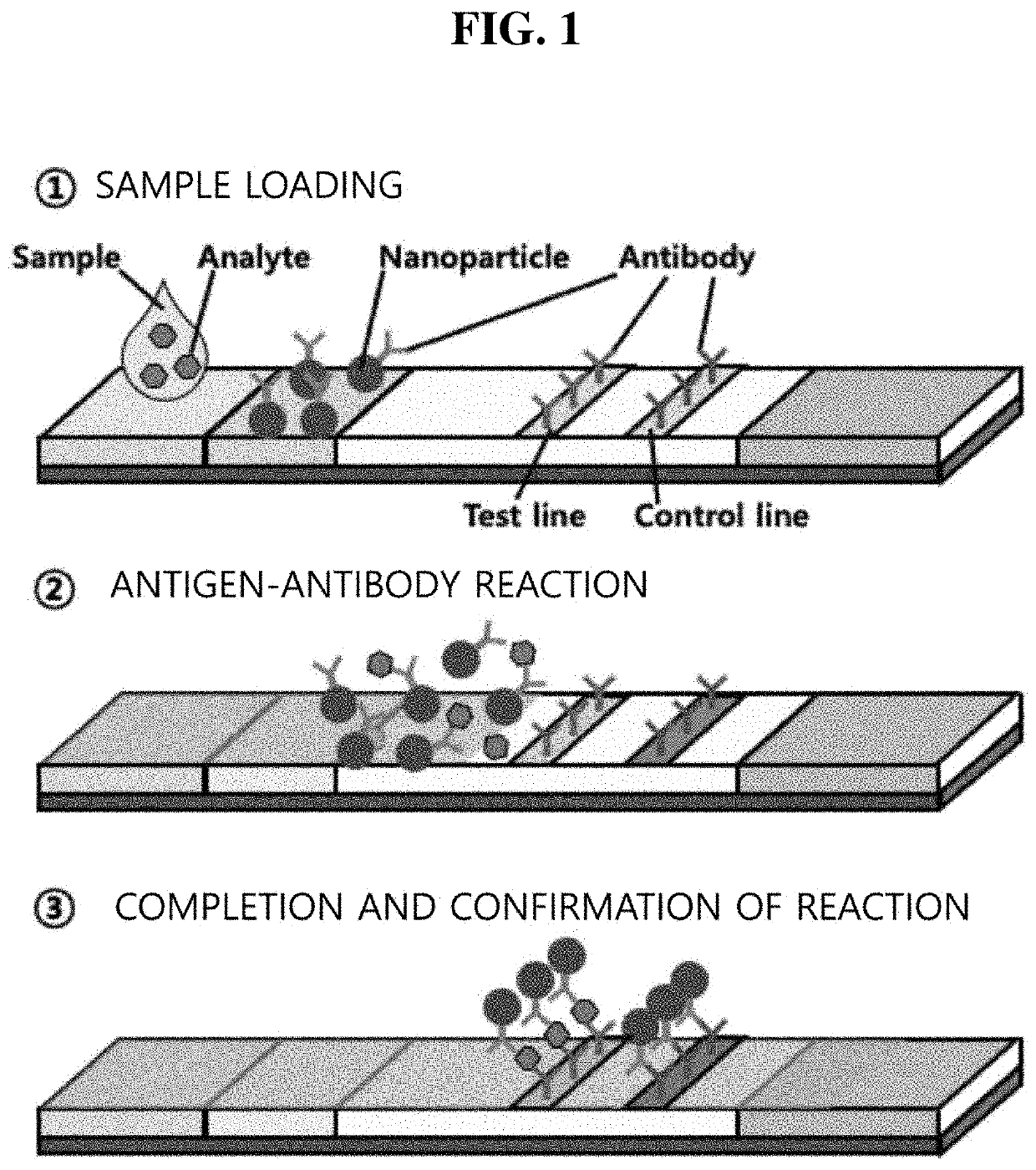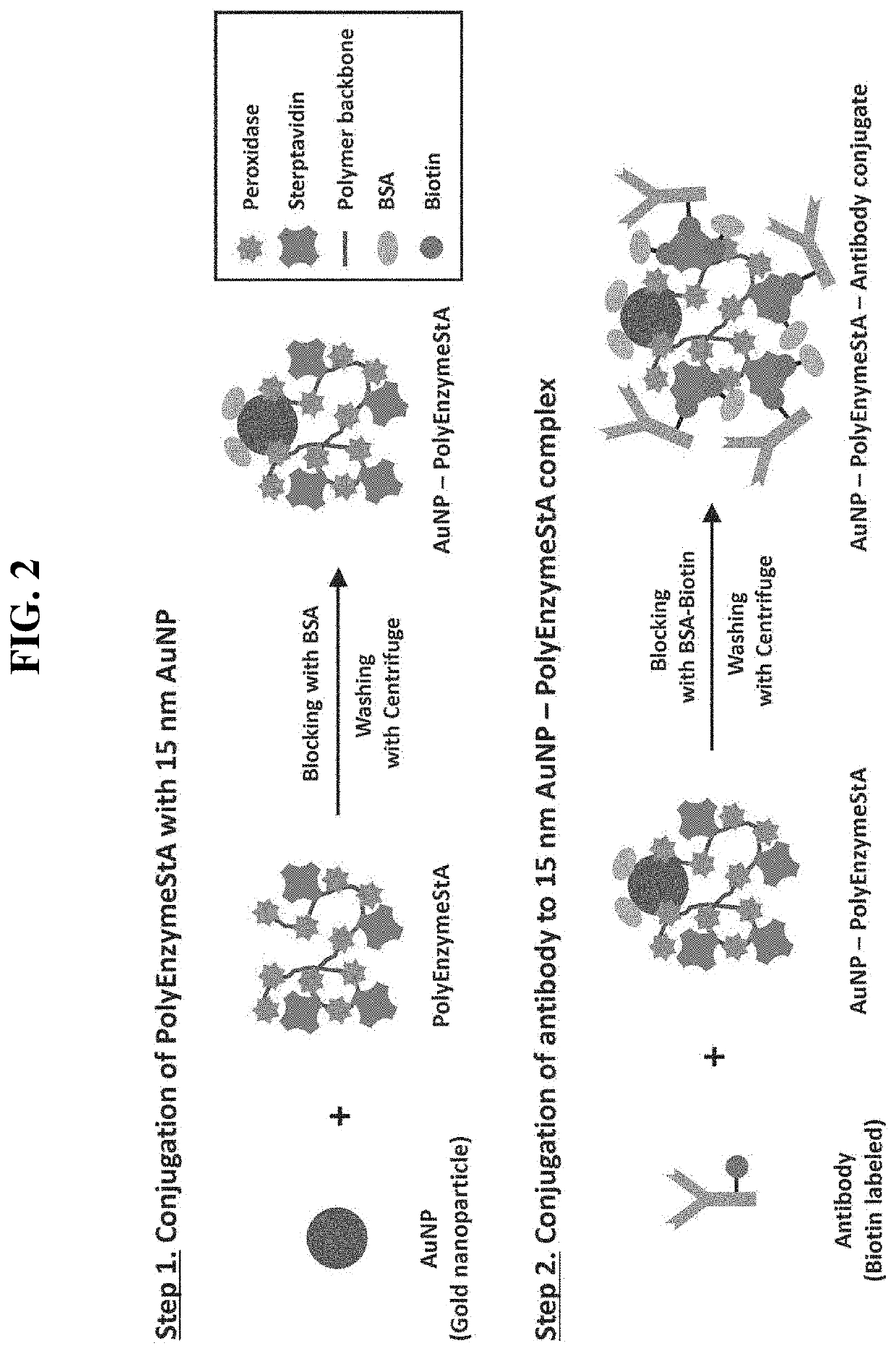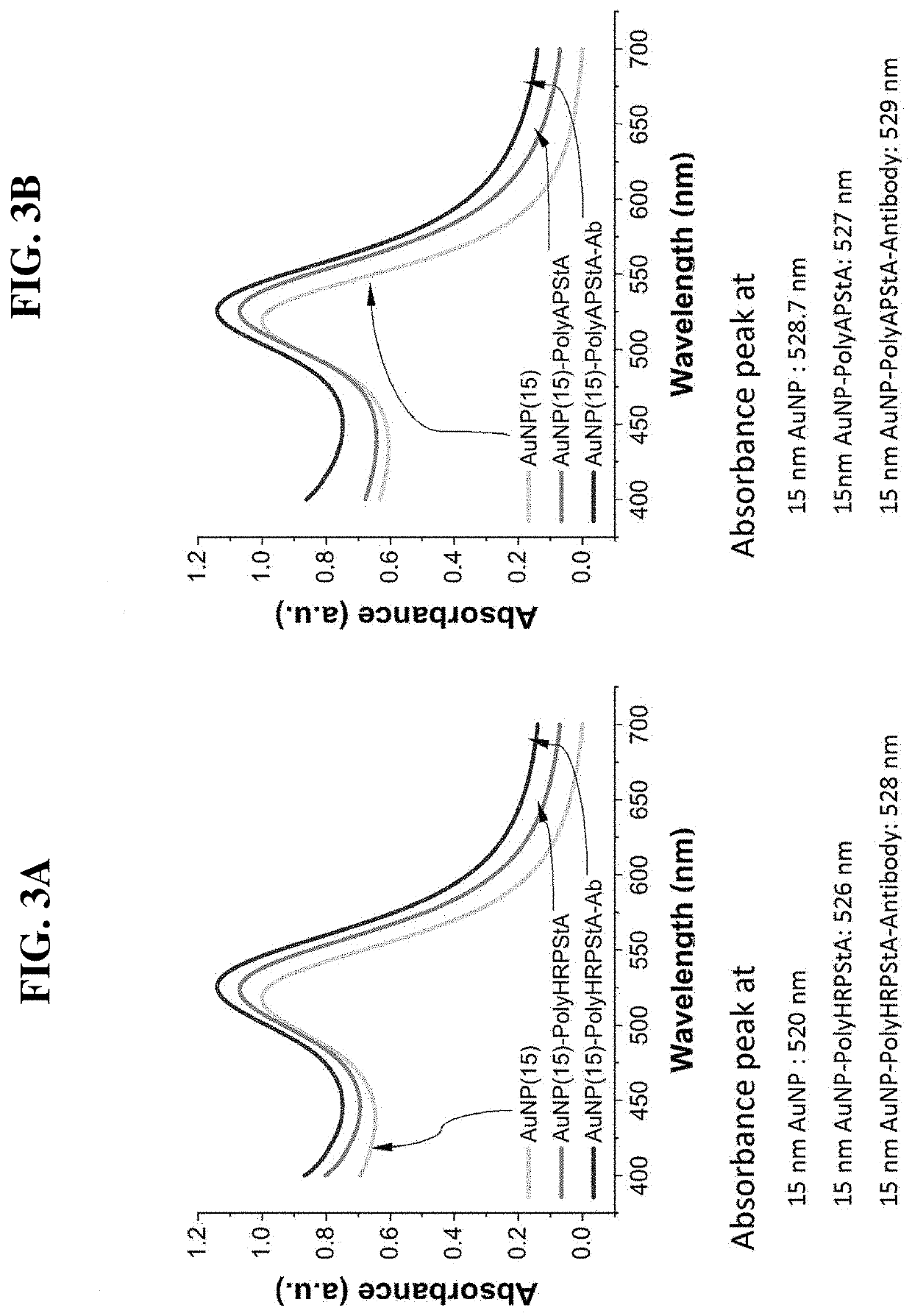Conjugate for immunodetection based on lateral flow assay, and immunodetection method using same
a technology of conjugate and immunodetection, which is applied in the field of conjugate for immunodetection based on lateral flow assay, and immunodetection method using same, can solve the problems of enzyme can be attached to the surface of nanoparticles, difficult to apply to antigens required for high-sensitivity detection, and complicated process of fabricating enzyme polymer-antibody conjugate, etc., to achieve the effect of improving detection sensitivity, increasing detection dynamic range, and simple process of conjuga
- Summary
- Abstract
- Description
- Claims
- Application Information
AI Technical Summary
Benefits of technology
Problems solved by technology
Method used
Image
Examples
example 1
Manufacture of Conjugate for Immunodetection of the Present Invention
[0129]The conjugate for the immunodetection of the present invention was prepared through the following steps.
[0130]1) 1 mL of gold nanoparticles of lx concentration (1.40×1012 / mL) and 100 mL of a 0.1 M borate buffer (pH 8.5) were sequentially added in a 1.5 mL EP tube and vertex-mixed for 30 seconds and then spin-down for 10 seconds and purified at 25° C. for 10 minutes.
[0131]2) 1 mg / mL of an HRP polymer was added by 10 mL in the solution, vertex-mixed for 30 seconds and then spin-down for 10 seconds and reacted at 25° C. for 1 hour using a rotating stirrer (25 rpm).
[0132]3) For blocking, 5 mL of 1×PBS (pH 7.4) containing 20% (g / g) BSA was added, vertex-mixed for 30 seconds and then spin-down for 10 seconds and purified and reacted at 4° C. for 30 minutes.
[0133]4) Washing was performed using a centrifuge. At this time, 15 nm gold nanoparticles were centrifuged at 15,000 rpm and 10° C. for 25 minutes and then a su...
example 2
Analysis Results of Conjugate for Immunodetection of the Present Invention
[0139]The absorption spectrum of the conjugate for immunodetection according to the present invention was measured through the following method.
[0140]The gold nanoparticles and each conjugate were diluted using a 10 mM borate buffer (pH 8.5) so that the concentration thereof became 0.5×(1 mL). For example, 25 mL of a 20× conjugate was mixed with 975 mL of a 10 mM borate buffer (pH 8.5) and diluted to become a 0.5× concentration (1 mL). The absorbance was measured in the range of 400 to 700 nm of each sample using a spectrophotometer. At this time, a 10 mM borate buffer (pH 8.5) used as a diluent was used as a reference and the measurement was performed at 25° C. In the range of 400 to 700 nm, the wavelength corresponding to the maximum absorbance of each sample was confirmed.
[0141]The results of measuring the absorption spectrum of the conjugate for immunodetection according to the present invention by the met...
example 3
Reaction Aensitivity of Conjugate for Immunodetection of the Present Invention
[0144]Reaction sensitivity analysis of AuNP-poly HRP conjugate and AuNP-HRP conjugate
[0145]The HRP reaction sensitivity of the AuNP-PolyHRP conjugate was compared with the sensitivity of the HRP reaction of a single enzyme AuNP conjugate (AuNP-HRP) produced by adding PolyHRP and HRP in the same amount (based on protein concentration) at the same concentration.
[0146]As a result of the experiment, since HRP existed in the form linked to a polymer, the PolyHRP exhibited improved sensitivity due to an effect of adsorbing more HRPs than when the general HRP was adsorbed in a single AuNP (FIG. 5A). As a result, it could be seen that the sensitivity of the conjugate (AuNP-PolyHRP) using the enzyme polymer was better than the sensitivity of the conjugate (AuNP-HRP) using a single enzyme.
[0147]Reaction Sensitivity Analysis of AuNP-polyStA Conjugate and AuNP-StA Conjugate
[0148]It was confirmed that the conjugate for...
PUM
| Property | Measurement | Unit |
|---|---|---|
| size | aaaaa | aaaaa |
| molecular weight | aaaaa | aaaaa |
| molecular weight | aaaaa | aaaaa |
Abstract
Description
Claims
Application Information
 Login to View More
Login to View More - R&D
- Intellectual Property
- Life Sciences
- Materials
- Tech Scout
- Unparalleled Data Quality
- Higher Quality Content
- 60% Fewer Hallucinations
Browse by: Latest US Patents, China's latest patents, Technical Efficacy Thesaurus, Application Domain, Technology Topic, Popular Technical Reports.
© 2025 PatSnap. All rights reserved.Legal|Privacy policy|Modern Slavery Act Transparency Statement|Sitemap|About US| Contact US: help@patsnap.com



